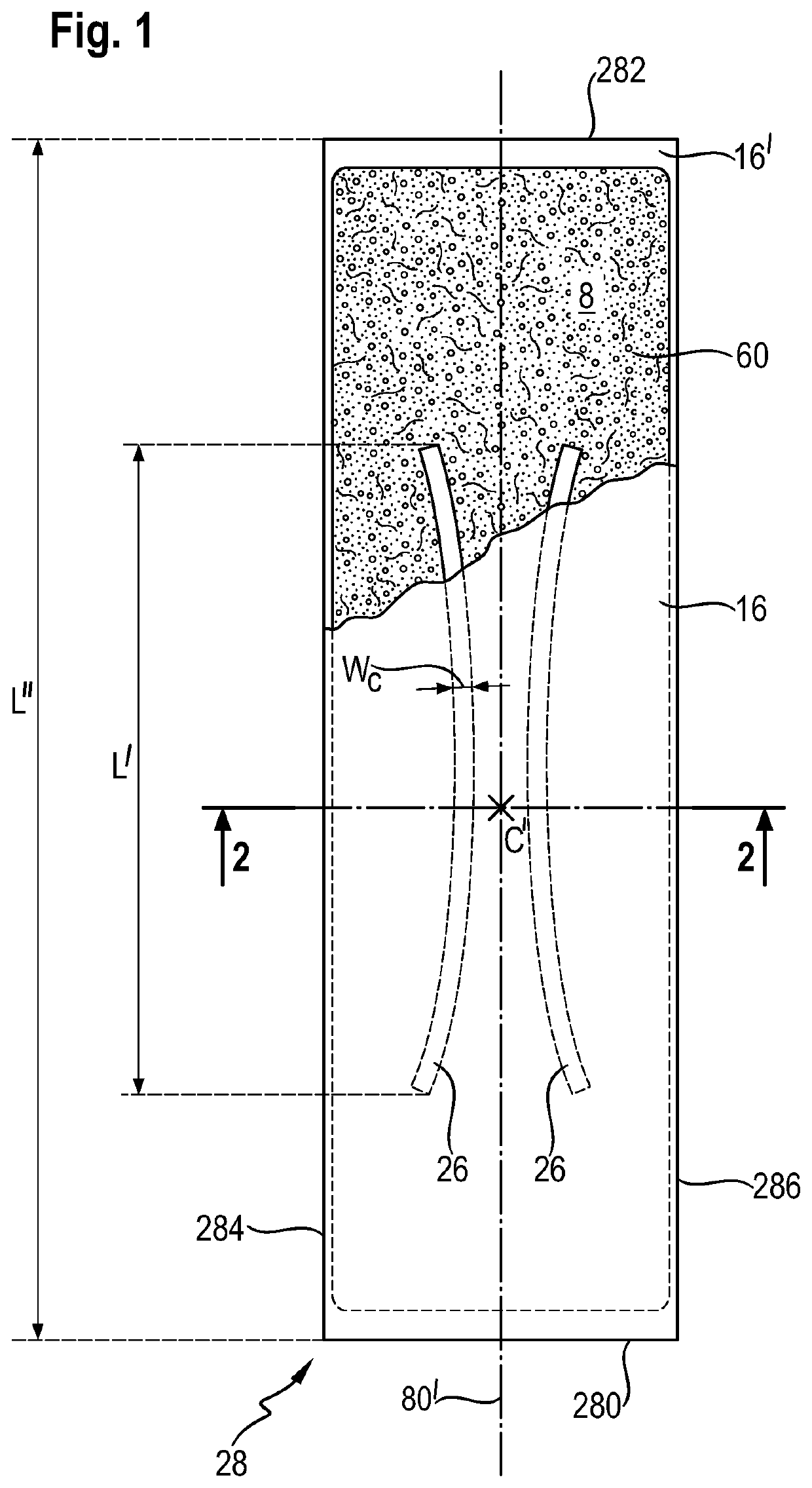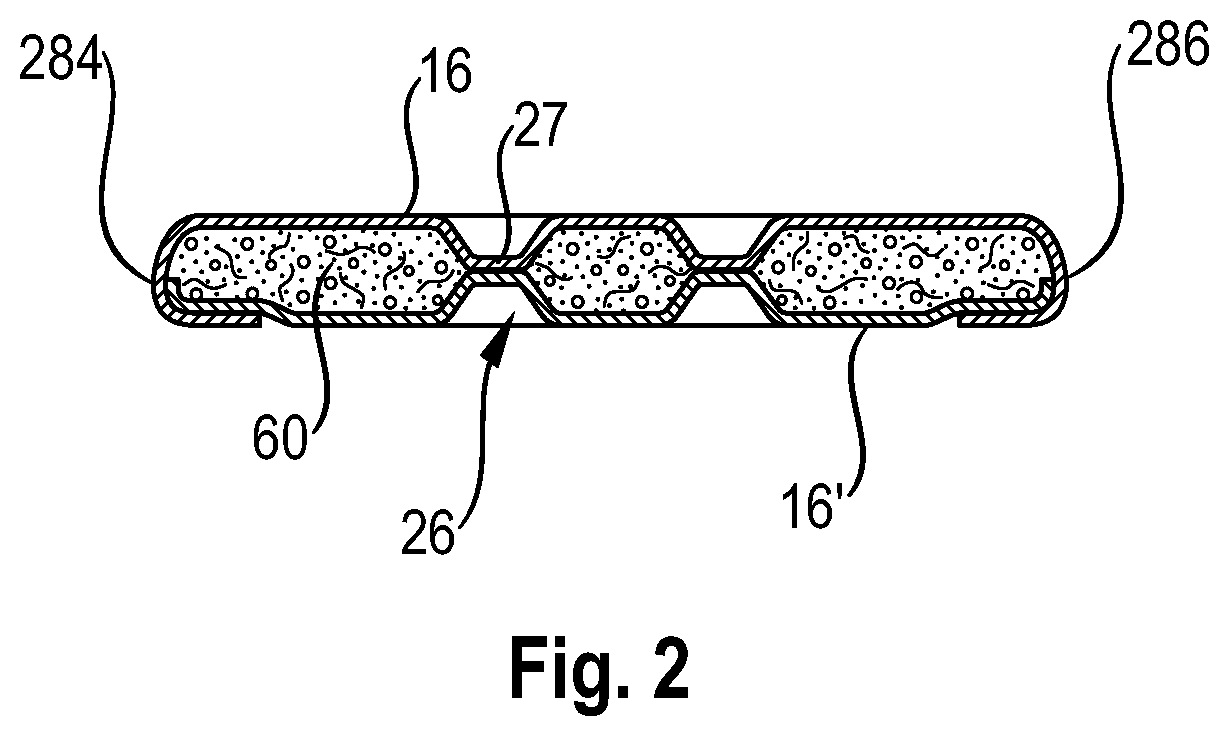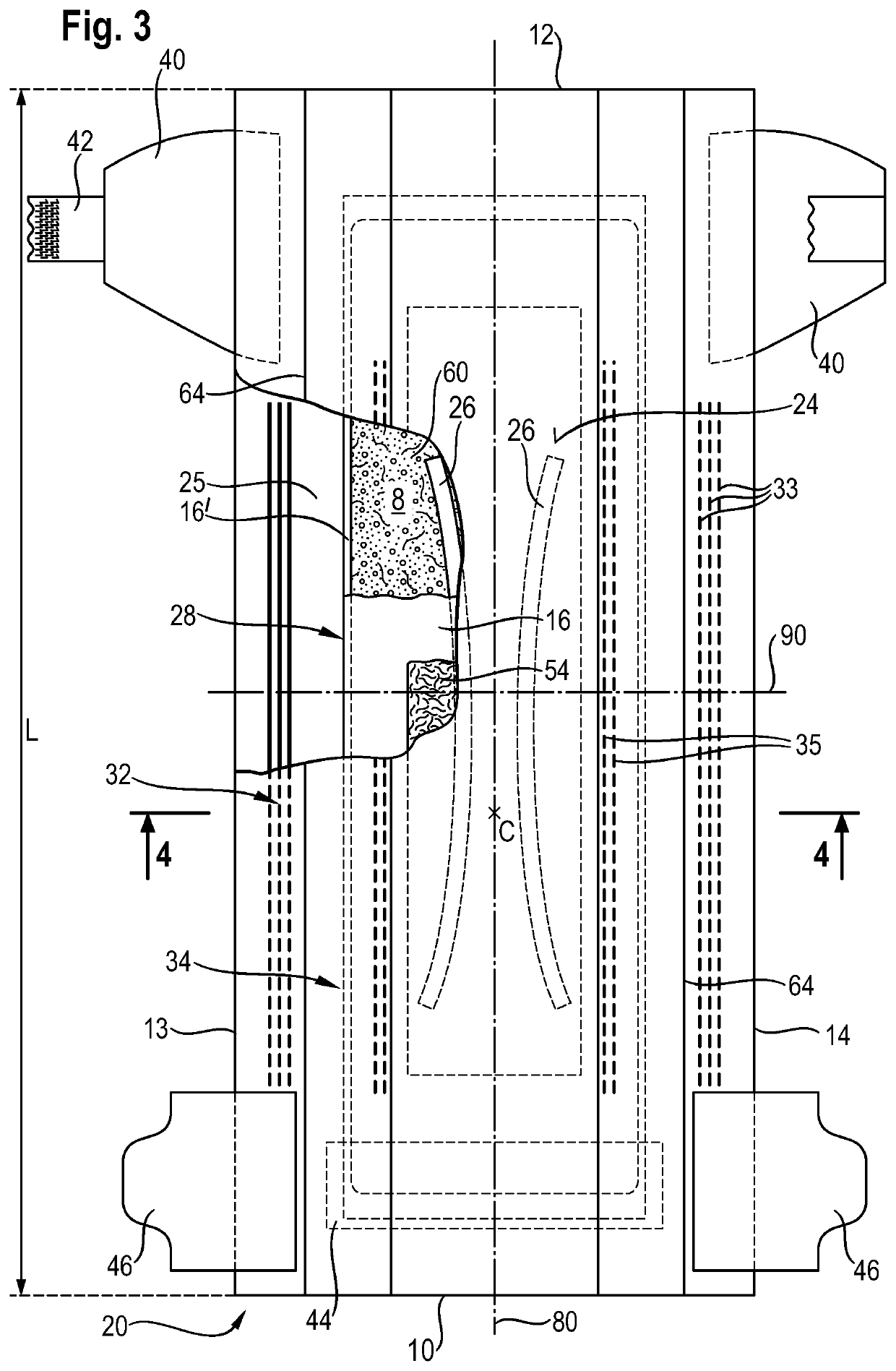Absorbent cores having material free areas
a free area and absorbent core technology, applied in the field of absorbent cores, can solve the problems of reducing the freedom of repositioning and free space to expand, and achieve the effects of increasing the ratio of outer surface, high pressure, and high absorbent material compaction
- Summary
- Abstract
- Description
- Claims
- Application Information
AI Technical Summary
Benefits of technology
Problems solved by technology
Method used
Image
Examples
Embodiment Construction
[0033]Introduction
[0034]As used herein, the term “Absorbent article” refers to devices that absorb and contain body exudates, and, more specifically, refers to devices that are placed against or in proximity to the body of the wearer to absorb and contain the various exudates discharged from the body. Absorbent articles may include diapers (baby diapers and diapers for adult incontinence), pants, inserts, feminine care absorbent articles such as sanitary napkins or pantiliners, and the like. As used herein, the term “exudates” includes, but is not limited to, urine, blood, vaginal discharges, sweat and fecal matter. Preferred absorbent articles of the present invention are disposable absorbent articles, more preferably disposable diapers and disposable pants. The absorbent articles of the invention will be further illustrated in the below description and in the Figures in the form of a disposable diapers. Nothing in this description should be however considered limiting the scope of...
PUM
| Property | Measurement | Unit |
|---|---|---|
| Bulk Density Test | aaaaa | aaaaa |
| density | aaaaa | aaaaa |
| width | aaaaa | aaaaa |
Abstract
Description
Claims
Application Information
 Login to View More
Login to View More - R&D
- Intellectual Property
- Life Sciences
- Materials
- Tech Scout
- Unparalleled Data Quality
- Higher Quality Content
- 60% Fewer Hallucinations
Browse by: Latest US Patents, China's latest patents, Technical Efficacy Thesaurus, Application Domain, Technology Topic, Popular Technical Reports.
© 2025 PatSnap. All rights reserved.Legal|Privacy policy|Modern Slavery Act Transparency Statement|Sitemap|About US| Contact US: help@patsnap.com



